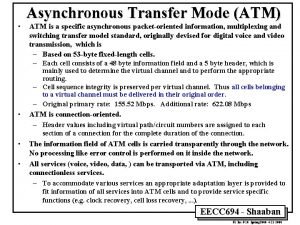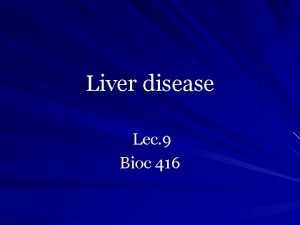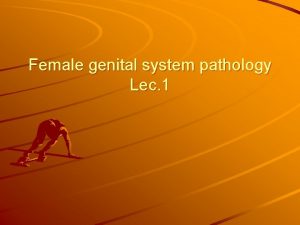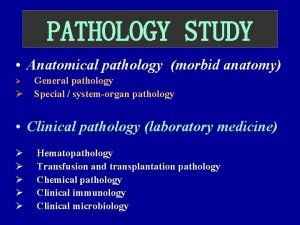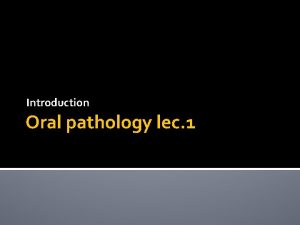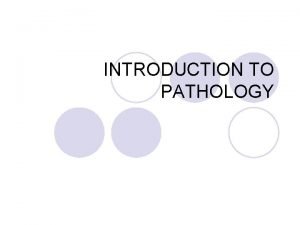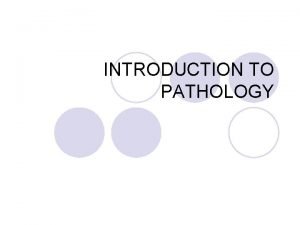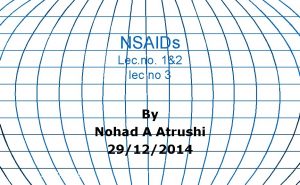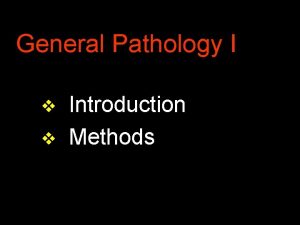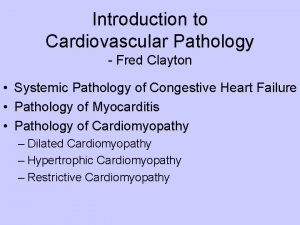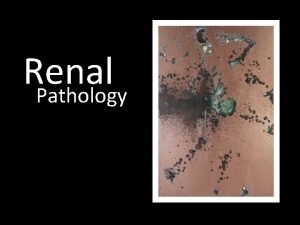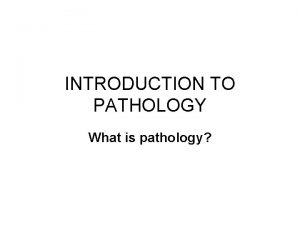Pathology lec 1 Introduction v What is pathology




















- Slides: 20

Pathology lec 1 Introduction

v. What is pathology? ? ? v. Why? v. How? v. What? v. How?

Diseases may, in turn, be defined as an abnormal variation in structure or function of any part of the body


• Pathology is the study (logos) of disease (pathos). • The study of the structural, biochemical, and functional changes in cells, tissues, and organs that underlie disease.

Etiology Pathogenesis Disease G&M changes

Etiology or Cause • There are two major classes of etiologic factors: ü Genetic (e. g. , inherited mutations and disease-associated gene variants, or polymorphisms) ü Acquired (e. g. , infectious, nutritional, chemical, physical).

Pathogenesis Or Mechanism • Pathogenesis refers to the sequence of events in the response of cells or tissues to the etiologic agent, from the initial stimulus to the ultimate expression of the disease.

Molecular and Morphologic Changes • Morphologic changes refer to the structural alterations in cells or tissues that are either characteristic of a disease or diagnostic of an etiologic process.

Functional Derangements and Clinical Manifestations • The end results of genetic, biochemical, and structural changes in cells and tissues are functional abnormalities, which lead to the clinical manifestations (symptoms and signs) of disease, as well as its progress (clinical course and outcome).

Question ? ? ? • Can you apply the previous terms to form a diagram for Aphthous ulcer?

Fields of Pathology Histopathology Microbiology Cytology Immunopathology; Hematopathology; Forensic pathology Chemical pathology Diagnosis Medical genetics;

Histopathology Ø Gross : Describe what you see by your eyes to be imagined by others brains!!!

Ø Microscopic: Describe changes at tissue and cell level

Ø Special techniques : to see what is hidden!!! ü Immunohistochemistry ü Immunofluorescence ü Histochemistry ü Molecular study ü Electron microscope

General pathology Is concerned with the causations, mechanisms and characteristics of the major categories of disease (e. g. cell injuries and degenerations, inflammations, healing, neoplasia). Systemic pathology Is the study of various systems that comprise the body such as cardiovascular pathology, gastrointestinal pathology and so on. It includes the descriptions of specific diseases as they affect individual organs (e. g. appendicitis, lung cancer, atheroma etc, ).

Pathology study: v General: § Homeostasis & Adaptation § Cell injury & cell death § Tissue healing and repair § Inflammation § Hemodynamic § Environmental § Infectious § Genetic § Neoplasia

v. Systemic pathology: o Cardiovascular o Hematology o Respiratory o GIT and liver o Endocrine o Ect….

v. BIOPSY: It is a process of surgically removing tissue from a patient for histopathological examination. v It provides valuable information in determining the prognosis and type of the treatment required.

v. Biopsy: • incisional biopsies: only a portion of the lesion is sampled, and therefore the procedure is strictly of a diagnostic nature. • excisional biopsies : the entire lesion is removed, usually with a rim of normal tissue, and therefore the procedure serves both a diagnostic and a therapeutic function.
 Lec scoreboard
Lec scoreboard 11th chemistry thermodynamics lec 13
11th chemistry thermodynamics lec 13 Lec ditto
Lec ditto Scoreboarding computer architecture
Scoreboarding computer architecture Componentes del lec
Componentes del lec 11th chemistry thermodynamics lec 10
11th chemistry thermodynamics lec 10 Lec element
Lec element August lec 250
August lec 250 Underground pipeline for irrigation
Underground pipeline for irrigation Lec 1
Lec 1 Art 455 lec
Art 455 lec Lec
Lec 132000 lec
132000 lec Xrl in 8051
Xrl in 8051 Tura analítica
Tura analítica Sekisui slec
Sekisui slec 416 lec
416 lec Lec
Lec Diesel lec
Diesel lec Lec promotion
Lec promotion Lec anatomia
Lec anatomia












